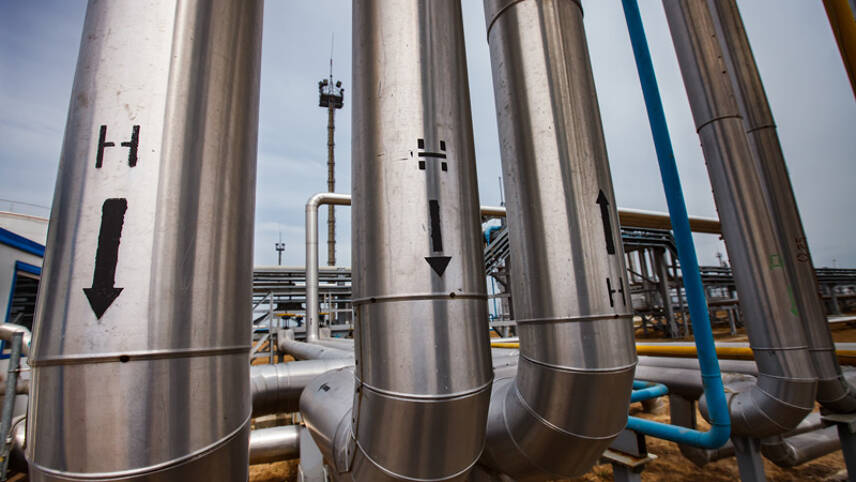Register for free and continue reading
Join our growing army of changemakers and get unlimited access to our premium content

A new report from Worley and Princeton University this week concluded that the delivery times for projects across the hydrogen value chain in Europe will need to be accelerated by at least 40% if the bloc is to meet its goals to scale production.
The EU is aiming for its member nations to collectively generate 10 million tonnes of green hydrogen per annum from 2030. At the moment, more than 90% of global hydrogen production capacity is fossil-fuelled, meaning that renewable hydrogen does not benefit from the same economy of scale. The EU and other nations are vying to turn this trend around and provide affordable low-carbon hydrogen to hard-to-abate sectors.
The report concludes that an unprecedented scale-up in electrolyser capacity and in renewable electricity generation capacity addition will be needed for the EU to meet its goal. It predicts that global electrolyser manufacturing capacity will need to increase at least eightfold, while annual capacity additions for offshore wind will need to be four times higher than levels seen so far this decade.
Additionally, there will need to be a 35% increase in desalination capacity additions, as most electrolysers cannot use salt water.
Beyond scaling the key supply chains for green hydrogen, the report raises concerns about the delivery process for production projects themselves. It outlines how, at present, the timelines required for delivery are likely to exceed ten years. The most rapid likely delivery is eight years. As such, the EU simply will not meet its 2030 target.
Unprecedented interventions
The report goes on to state that speeding up delivery is possible. It sets out interventions which, if taken in tandem, researchers believe could decrease delivery times for green hydrogen production projects by 40%, without cutting corners.
Proposed changes include streamlining permitting and planning process. The report acknowledges challenges with grid connection delays in the renewables space, delaying major projects by months or even years. It also picks holes in the current shape of planning and permitting roles for green hydrogen generation arrays themselves.
The report additionally emphasises the importance of knowledge-sharing and alignment across the green hydrogen industry, so different project teams are not duplicating work and thus wasting time and resources.
It states that “knowledge and expertise are often held in-house to maintain commercial advantages,” but that this approach will be disingenuous to rapidly scaling the sector as a whole. Floated is the idea of a new cross-industry collaborative hub or taskforce, also including policymakers, academia and finance experts.
Worley’s group director of sustainability Dr Paul Egbert said the proposed interventions are “pragmatic”.
“The proposed initiatives go significantly beyond current practices seen within the industry, but this new level of collaboration and support will be essential for driving investment faster, steering the region towards both sustainable and environmentally conscious energy production,” he said.
UK picture
The UK, like the EU, has big ambitions to expand its nascent low-carbon hydrogen sector. The Energy Security Strategy published in April 2022 doubled the UK’s low-carbon hydrogen capacity target for 2030 to 10GW.
Since the Strategy launch, the UK has firmed up the design of the hydrogen fund and hydrogen business model, to support the first tranche of green hydrogen projects. It is also working on a new standard to classify which kinds of hydrogen can be classed as “low-carbon”.
With this in mind, edie asked trade body Hydrogen UK whether the Worley and Princeton report’s findings would be applicable to the UK as well as the EU, post-Brexit.
Their head of policy and analysis Brett Ryan said the challenges facing deployment in the UK are “largely the same” as in the EU.
Ryan elaborated: “The themes of certainty, acceptance and productivity are certainly common to both.
“While the UK has access to natural resources that should lend itself to significant renewable electricity generation and hydrogen storage, it is suffering due to delays in obtaining grid connections and a lack of strategic infrastructure planning.
“The interventions suggested in the report provide some tangible opportunities to address the barriers and are for the most part equally relevant to the UK as they are to the EU. With the clock ticking for the UK to meet its net zero goal and hydrogen ambitions, a range of measures such as greater collaboration, risk sharing and support for a broad mix of technologies are needed.”
Related news: Scotland could become a major exporter of low-carbon hydrogen to mainland Europe
Download edie’s free guide to hydrogen for net-zero by clicking here.


Please login or Register to leave a comment.